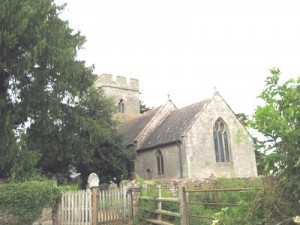This church is 14th century, but was restored in the mid 19th century.
In 1866 the church was re-opened, and the ceremony was a very low key affair – partly because of the limited space inside, but also due to deference to the wishes of the Bishop who had recently suffered the loss of his wife and didn’t want to attend large public occasions.
Before restoration, the church was described as being “redolent of whitewash and plaster with a ceiling undulating like a mole field. The knave was encumbered with pews of an old fashioned style, not inaptly denominated by the term horse box. ”
The pulpit was considered ugly, and the floor had sunk so much that it was becoming very damp; the whole building was in a very dilapidated condition.
Following restoration, the tumbledown porch had been carefully restored, and the old door mended; the font had been moved and put on a sandstone base, then fitted with a spiral cover of parquetrie work raised by a cord and weight.
The nave was given new oak benches, and the new pulpit was thought to be very elegant.
Many other improvements, repairs and replacements were carried out and everyone declared the result to be most satisfactory.
During restoration, many relics were found including an incised cross of great age.
